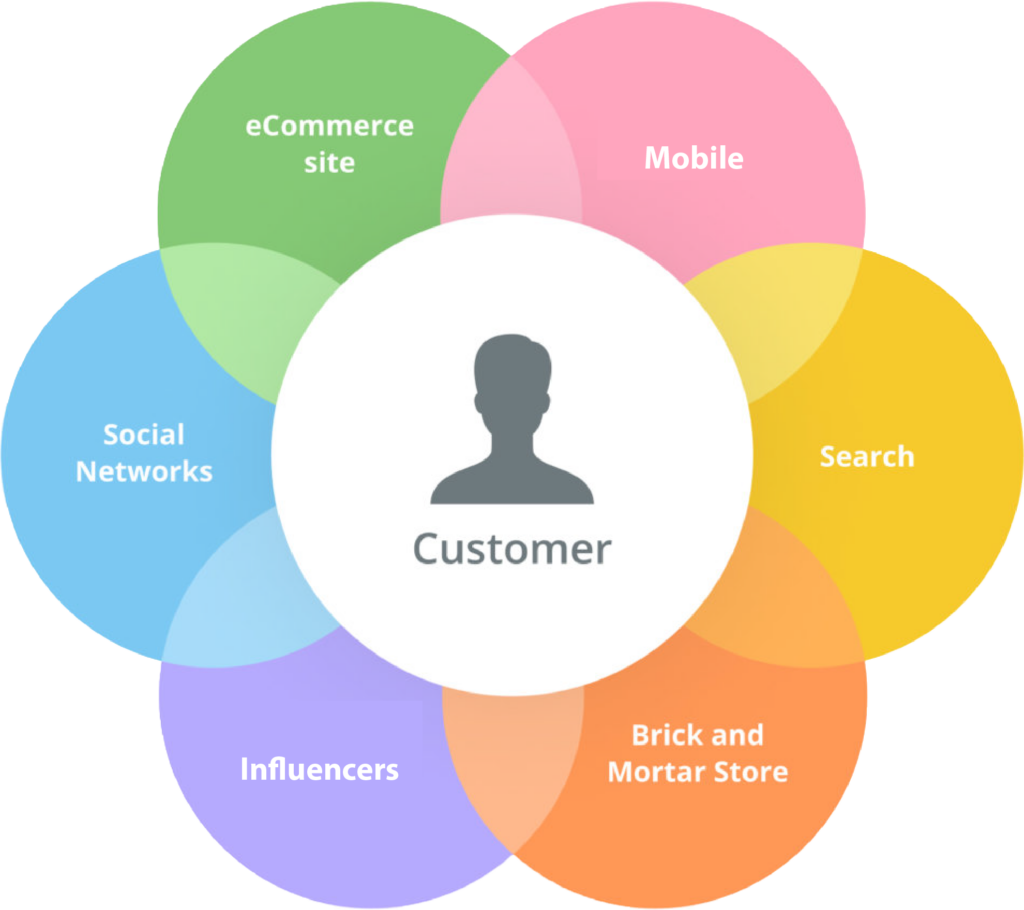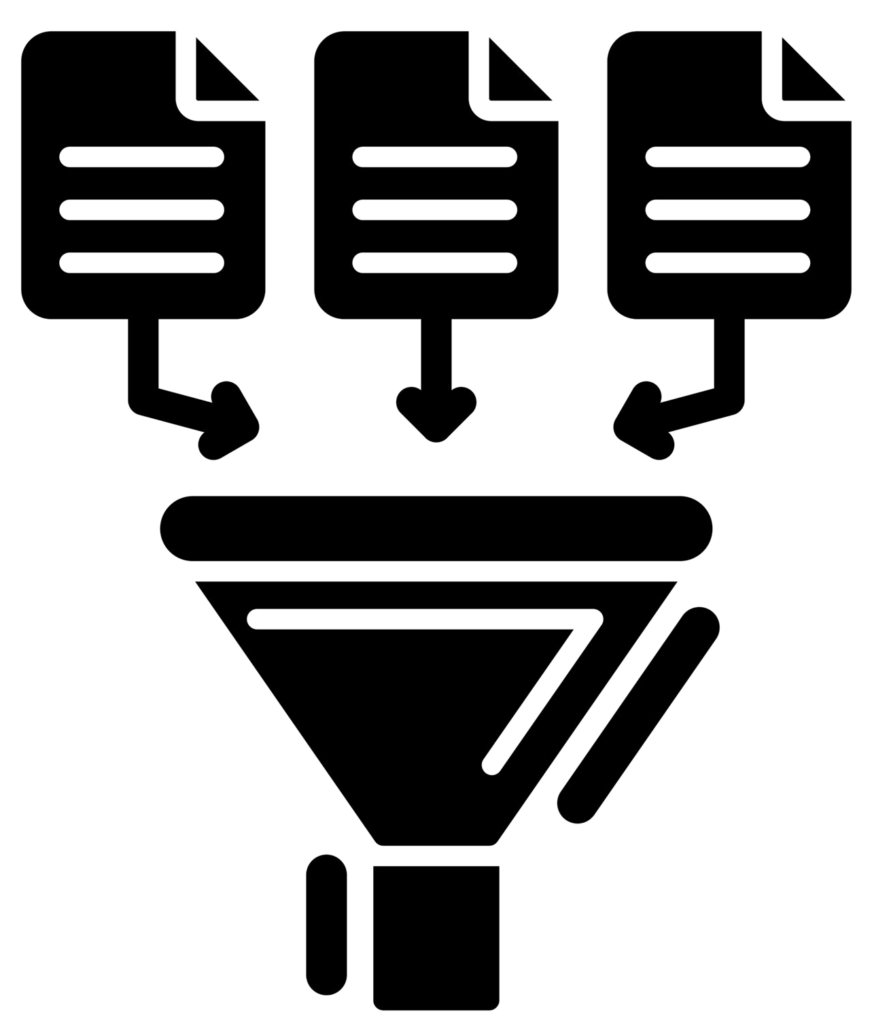Contents
- What is an Omnichannel Marketing Strategy?
- What is Omnichannel Attribution?
- What are the Benefits of Using an Omnichannel Marketing Strategy?
- How to Develop an Omnichannel Marketing Strategy
- Cross-Channel Marketing Measurement & Optimization is Essential for a Successful Omnichannel Marketing Strategy
Why You Need an Omnichannel Marketing Strategy
11/03/2023
In the ever-evolving landscape of marketing, the concept of omnichannel marketing has emerged as a powerful and indispensable strategy for businesses aiming to connect with today’s digitally savvy, multi-device consumers. In a world where customers are constantly transitioning between smartphones, tablets, laptops, and brick-and-mortar stores, it’s imperative for brands to provide a unified and consistent experience across all these touchpoints.
In this blog post, OptiMine will delve into the world of omnichannel marketing, exploring what it is, its benefits, how to develop an omnichannel marketing strategy, some examples of omnichannel marketing, and why having the right measurement capabilities are so critical for its success. Join us on this journey to unlock the secrets of omnichannel marketing and discover how it can revolutionize your brand’s customer engagement and drive success.
What is an Omnichannel Marketing Strategy?

An omnichannel marketing strategy is a holistic approach to reaching and engaging with customers across multiple channels seamlessly and cohesively. Unlike traditional marketing, which often relies on siloed efforts across individual platforms, an omnichannel strategy aims to create a unified brand experience across various touchpoints, both online and offline. It encompasses a wide array of channels, such as websites, mobile apps, social media, email, physical stores, call centers, influencers and more. The key to an effective omnichannel strategy is the synchronization of messaging, branding, and customer data to ensure consistency and continuity throughout the customer journey. The result? A more personalized and convenient experience for your audience which ultimately enhances customer satisfaction, loyalty, and overall business performance.
What is Omnichannel Attribution?
Omnichannel attribution is a methodology used in marketing to analyze and assign value to the various touchpoints and channels that contribute to a customer’s journey or conversion. In an increasingly complex and interconnected marketing landscape, omnichannel attribution seeks to understand how different marketing channels, such as programmatic display, paid social, email, and offline interactions, influence a customer’s decision to make a purchase or take a specific action. This approach, which is also known as “Multi-Touch Attribution” (or “MTA” for short) goes beyond simple last-click attribution, which credits the final touchpoint before a conversion, and instead considers the entire customer journey. Omnichannel attribution models aim to provide a more accurate and comprehensive view of how each channel contributes to the overall marketing strategy, helping businesses allocate their resources more effectively and make informed decisions on optimizing their marketing efforts.
What are the Benefits of Using an Omnichannel Marketing Strategy?
There are many benefits to using an omnichannel marketing strategy:
Enhanced Customer Experience

Omnichannel marketing creates a seamless and consistent experience for customers across multiple channels, improving consumer confidence, satisfaction and engagement.
Adaptability

An omnichannel approach can adapt to changing consumer behavior and emerging technologies more effectively, ensuring a brand’s relevance in a dynamic market.
Brand Consistency

Maintaining a consistent brand identity across all channels helps reinforce brand recognition and trust.
Improved Data Utilization

Omnichannel strategies allow for better data collection and analysis, enabling businesses to make more informed decisions and refine their marketing efforts.
Optimized Resource Allocation

By understanding the effectiveness of each channel in the customer journey, businesses can allocate resources more efficiently, optimizing their marketing budget.
Higher Conversion Rates

Providing a unified experience and relevant content to customers can lead to higher conversion rates and improved ROI.
Better Customer Insights

Omnichannel strategies provide a deeper understanding of customer behavior, preferences, and needs, helping brands tailor their marketing messages accordingly.
Increased Customer Loyalty

A personalized and convenient experience fosters customer loyalty and encourages repeat business.
Competitive Advantage

Companies that implement omnichannel marketing tend to out-perform competitors still relying on disjointed multi-channel approaches.
Real-time Engagement

Omnichannel marketing allows for real-time engagement and communication with customers, which can be particularly valuable in addressing issues and concerns promptly.
How to Develop an Omnichannel Marketing Strategy
Here are some steps you can take to develop your brand’s omnichannel marketing strategy:
1. Customer Segmentation
Begin by identifying and segmenting your target audience based on their preferences, behaviors and demographics to understand their specific needs and expectations.
2. Channel Assessment
Evaluate the various channels available (e.g. social media, email, website, etc.) to determine which ones your target audience prefers and where they engage most frequently.
3. Data Integration
Integrate data from all channels to create a unified customer profile, ensuring a cohesive view of each customer’s interactions with your brand.
4. Content Consistency
Develop consistent messaging, branding, and content that can be adapted and delivered seamlessly across all channels, maintaining a cohesive brand identity.
5. Cross-Channel Communication
Implement strategies for communication between channels, enabling the transfer of data and customer information as customers move across touchpoints.
6. Technology Investment
Invest in the right technologies and tools, such as CRM systems, marketing automation platforms, and measurement software (like OptiMine) to support data integration and analysis.
7. Customer Journey Mapping
Create detailed customer journey maps to understand how customers move between channels and identify key touchpoints for engagement.
8. Testing and Optimization
Continuously test and refine your omnichannel strategy, using data-driven insights to optimize channel performance and customer interactions.
9. Monitoring and Measurement
Implement key performance indicators (KPIs) to measure the success of your omnichannel strategy, including customer satisfaction, conversion rates, and ROI.
10. Feedback and Adaptation
Collect and act upon customer feedback to refine your strategy and adapt to changing consumer behavior and market trends.
11. Legal and Data Privacy Compliance
Ensure that your strategy complies with data protection regulations and privacy laws, safeguarding customer data and maintaining trust. (Fun fact: OptiMine’s solution is 100% privacy-safe– no PII, identity tracking, or individual consumer data needed– EVER!)
12. Collaboration Across Teams
Foster collaboration between different departments within your organization to ensure that everyone is aligned with the omnichannel strategy and its goals.
13. Omnichannel Approach Must be Part of Overall Marketing Strategy
And remember – a brand’s marketing strategy needs to also be part of the omnichannel approach. Businesses that are successful use a wide variety of marketing channels to reach their target customers.
Cross-Channel Marketing Measurement & Optimization is Essential for a Successful Omnichannel Marketing Strategy
To reiterate a crucial point – a brand’s omnichannel approach must be part of the overall marketing strategy in order to drive success. And, to take it a step further, cross-channel marketing measurement and optimization is a critical piece to the omnichannel strategy puzzle because:
- Measurement can no longer be done in silos.
- Measurement needs to account for the entire set of conversion points. Measuring only the e-commerce impacts of digital ads will miss most of the story. For example, OptiMine’s measurement shows that, on average, 67% of the total value and impact of any paid social campaign is in in-store conversions vs. 33% for e-commerce, despite paid social being a digital channel. Read the full OptiMine Index for more information and benchmark data on this topic.
- Omnichannel measurement also needs to cover all marketing channels- digital and traditional. It no longer makes sense to only measure certain channels when all have an impact on the total business.
- Brands’ marketing and analytics teams have to break out of silos to flourish because the total impacts of an omnichannel strategy are the keys to success – not just the individual pieces.
Using OptiMine to Measure Omnichannel Effectiveness
Now that you know why cross-channel measurement and optimization plays such a huge role in omnichannel marketing, we can dive into why OptiMine is the right choice for helping your brand develop, execute and measure a successful omnichannel marketing strategy.
Only OptiMine measures both digital and traditional marketing channels down to individual ad campaigns, across all online and offline conversions. No more silos and point solutions by channel – OptiMine will help you understand how ALL of your channels interact and contribute to sales performance.
And, with the fastest speed to value, OptiMine’s solution will go live in a fraction of the time compared to multi-touch attribution & other marketing mix modeling vendors.
Plus, OptiMine’s solution is 100% future-proof, meaning it is completely unaffected by all current and future privacy changes & regulations. No PII, identity tracking, etc. needed – EVER.
Contact us today to learn more about how OptiMine can measure and optimize your brand’s omnichannel marketing strategy!
Still want to learn more about OptiMine before reaching out? Check out a few of our case studies below that demonstrate how OptiMine’s cross-channel measurement and optimization capabilities have positively impacted the brands we work with:

